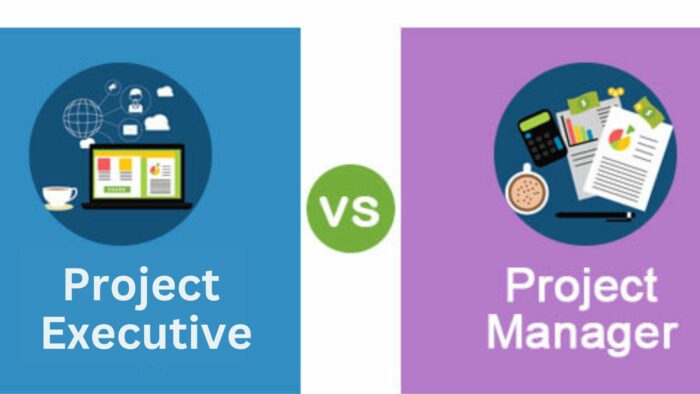Top Skills for Becoming the Best Project Executive in 2024
In the dynamic world of project management, one role often stands out: the Project Executive. But what exactly does this role entail, and why is it so crucial in steering a project to success? I’m here to shed some light on this pivotal position.
A Project Executive isn’t just a title; it’s a responsibility, a challenge, and often, the linchpin holding a project together. They’re the decision-makers, the strategists, and the leaders. But that’s just scratching the surface. Let’s delve deeper into the world of the executive and uncover the intricacies of this vital role.
Learning the Role of a Project Executive

To gain in-depth knowledge about the role of a Project Executive, it’s paramount to first define the position, before delving into the key responsibilities associated with this crucial role in project management.
Defining the Position
A Project Executive, in essence, is a senior management role. This individual takes the helm of a project or a portfolio of projects, monitoring and guiding their course to ensure they align with the overarching strategic goals set by the organization. The Project Executive doesn’t merely manage; they lead, setting a clear vision, and bridging the gap between high-level strategy and operational execution. Essentially, the role is a fusion of leadership, strategy, decision-making, and, indeed, a touch of project management.
- Leadership: Acting as a project’s beacon, the executive provides strategic direction, aligns the project team, and ensures a positive working environment.
- Strategy: They’re instrumental in designing and executing project strategies that align with organizational objectives, making strategic decisions based on analytics and forecasting.
- Risk Management: Identifying potential project risks, implementing mitigation plans, and ensuring project delivery despite unforeseen obstacles falls within their purview.
- Communication: Acting as the intermediary between senior management, stakeholders, and project teams, strong communication skills are paramount.
- Project Review & Control: They perform regular project reviews to gauge the progress and quality of the work delivered, implementing corrective measures when necessary.
- Budgeting and Financial Management: Overseeing the project’s financial resources, the Project Executive ensures budget adherence while maximizing ROI.
From the above, it’s palpable that the breadth and depth of a Project Executive’s role are vast, strategizing and implementing, navigating and leading, embodying indeed the central nervous system of successful project management.
Skills and Qualities of an Effective Project Executive

A high-performing project executive wears multiple hats and masters various professional competencies. In this section, we’ll dive deep into the paramount skills and qualities that set the exceptional project executives apart from the rest.
Leadership and Management Skills
A top-tier executive displays stellar leadership and management skills. Being at the helm of project execution, they master the art of directing resources towards the project designs and objectives. Decision-making prowess forms a crucial part of their leadership acumen, using data-driven logic to tackle complex problems head-on.
For instance, a project executive under a tight deadline will decide whether to delegate tasks or hire additional help, applying conflict resolution methods if disputes arise. They also exhibit finesse in change management, expertly navigating through alterations in project scope or guidelines without losing sight of the end goal.
Communication and Interpersonal Skills
Communication and interpersonal skills sit high on the list of necessary project executive qualities. Transparency remains a hallmark of their communication style as they serve as the bridge between several parties, such as stakeholders, project teams, and clients. An effective project executive listens actively and encourages open dialogue, ensuring a seamless flow of information throughout the project lifecycle.
For example, during a project review meeting, the executive doesn’t just present progress updates, but also solicits feedback from team members, integrating these insights into future planning. Their refined interpersonal skills come to the fore as they mediate between conflicting interests and manage expectations, fostering a harmonious and productive project environment.
Project Executive vs. Project Manager

Understanding the contrast between a Project Executive and a Project Manager helps clarify their distinctive roles in the grand scheme of project management. These two positions, while closely interlinked, play unique roles in driving projects towards successful completion.
Similarities and Differences
Many confuse Project Executives and Project Managers due to some overlapping qualities they share. Both positions require adept leadership skills, excellent communication abilities, and a robust understanding of project management principles. It’s their shared dedication to the project’s success that provides a common thread.
However, the roles and responsibilities they undertake are what set them apart. A Project Manager typically focuses on the day-to-day aspects of a project. They’re in charge of planning, executing, and overseeing operations, ensuring work aligns with established schedules and quality standards. On the other hand, a Project Executive holds a more strategic position. They provide the overarching direction for the project, manage risks, review progress, and handle budget allocations.
Moreover, Project Executives also facilitate stakeholder communication and make high-level decisions that shape the course of the project, keeping it in alignment with organizational goals.
How They Work Together
Despite their distinct roles, Project Executives and Project Managers often work together to ensure the project’s success. In many instances, the Project Manager functions as the right hand to the Project Executive, assisting in the implementation of high-level directives.
For instance, a Project Executive might design the project’s strategic plan. This plan, once crafted, gets handed over to the Project Manager, who breaks it down into actionable tasks and ensures their execution. Thus, they act as a bridge, translating strategic vision into operational reality.
In this collaborative dynamic, efficient information exchange becomes crucial. Transparency in communication, aided by regular meetings and progress updates, solidifies their partnership, enhancing project outcomes and fostering robust team performance.
Path to Becoming a Project Executive
As we move forward, it’s essential to shed light on the path that leads to becoming a project executive. This journey is paved with specific education, experience and career progression steps that are vital for this high-level role in project management.
Education and Experience Requirements
A formal education background, typically in the field of business or technology, lays the foundation for becoming a project executive. This often includes a Bachelor’s degree in business administration, management, information technology, or closely related fields. Pursuing a Master’s degree, such as an MBA, strengthens your candidature, especially if combined with concentrations like project management or leadership.
However, formal education isn’t all that shapes a project executive. Real-world experience carves an individual into an executive capable of making strategic decisions. Typically, candidates have about 10 years of experience in project management or a similar field. This counts experience managing multiple teams, handling large-scale projects, or holding a senior role in project management.
Remember, every executive was once a beginner. Starting as a team member or junior project manager, gaining experience, and gradually moving up the ladder builds a strong foundation for strategic responsibilities of a project executive.
Career Progression and Development
Career progression into the role of a project executive is often sequential, with each step preparing the candidate for the demands of the next. Starting in a hands-on role such as project coordinator, project specialist, or Software project manager helps develop a deeper understanding of the dynamics of project execution. Over time, progressing to roles with increased responsibilities, such as senior project manager, program manager, or director of projects, brings one closer to becoming a project executive.
Continued professional development is a decisive factor for anyone eyeing the executive role. This can be achieved by pursuing industry-recognized certifications like Project Management Professional (PMP), Certified Project Director (CPD), or Certified Portfolio Manager (CPM). Along with this, active participation in seminars, webinars, and industry events helps stay updated with the latest project management trends and strategies.
A blend of educational attainment, rich professional experience, and an avid interest in professional development aligns a candidate’s path towards becoming a successful project executive. This journey isn’t a sprint; it’s a marathon marked by continuous learning, perseverance, and growth. Through diligent work, commitment, and strategic career planning, that coveted project executive role is definitely within your reach.
Case Studies: Successful Project Executives in Action

Building upon the previous sections, let’s delve into some real-world examples of exceptional project executives, focusing not only on their achievements but also on how they managed to overcome challenges and showcase strategic decision-making prowess. We’ll dissect these examples to gain concrete insights into their professional maneuvers, using them as strong points of reference.
Overcoming Challenges
A clear instance comes from Mark, a renowned Project Executive at a multinational tech firm. Mark was handed a project riddled with fractured team dynamics, poorly defined targets and impending deadlines. However, he was quick to switch gears and handle the situation. Mark’s first step was restoring the team’s morale by addressing individual concerns, promoting a healthy work environment and endorsing teamwork. Next, he clearly defined the goals and broke them down into manageable tasks. Eventually, within a tight timeframe, the project was successfully delivered on time, much to the admiration of the company’s upper management.
Another Project Executive, Susan, achieved a milestone in her career when she successfully handled a significant restructuring project at a Fortune 500 firm. She was tasked with manage a massive downsizing operation, a truly daunting endeavor. She used careful negotiation, clear communication, and meticulous planning. Contrary to prevailing fears, her execution strategy minimized job losses, maximized efficiency, and the firm emerged stronger post-restructuring.
Strategic Decision-Making Examples
Consider John, a Project Executive in a healthcare company. Tasked with the deployment of a new healthcare IT system across nationwide branches, he faced resistance due to the staff’s apprehension about technology. John decided to roll out the system in a phased manner. He introduced training modules for each aspect of the system, gradually acclimating his staff to the new technology. As a result, the transition was smooth, and the system was well-integrated into their workflow without hampering their regular activities.
Karen offers another distinct example of strategic decision-making. As a project executive leading a cross-border merger for a globally recognized brand, she foresaw potential conflicts within intercultural teams. She preemptively arranged intercultural training workshops and ensured clear, concise communication across teams. As a result, the merger was proceeding smoothly and efficiently, with culture clash incidents reduced to a minimum.
In both examples, the project executives displayed an ability to make strategic decisions that not only addressed immediate concerns but also planned for potential risks and streamlined project progress. By looking at these executives’ stories, we can see how they lead their teams to project success through impeccable strategic decision-making and resilience in overcoming challenges.
Conclusion
So, as we’ve seen, a project executive’s role is pivotal in project management. They’re the strategic force behind aligning projects with larger organizational objectives. It’s their leadership, decision-making prowess, and knack for strategy development that set them apart. They’re not just managers; they’re visionaries who see the big picture, manage risks, and steer projects towards success.
Our real-world examples—Mark, Susan, John, and Karen—have shown us that becoming a successful executive is about more than just meeting the job requirements. It’s about resilience, effective leadership, and the ability to navigate challenges. These are the qualities that turn a good project executive into a great one. So whether you’re aspiring to become a project executive or looking to hire one, remember—it’s these strategic decision-making abilities and leadership skills that truly make the difference.
Frequently Asked Question (FAQs)
What is the role of a Project Executive in project management?
A project executive is a key figure in project management, tasked with decision-making, the development of project strategy, and effective leadership in aligning individual projects with broader organizational goals.
What skills are essential for a project executive?
Significant skills for a project executive include strong leadership, management, and communication abilities. These help to provide strategic direction, manage risks, and oversee progress, often working in conjunction with project managers.
How does the role of a project executive differ from that of a project manager?
While project managers primarily focus on overseeing day-to-day operations, project executives steer the strategic direction, manage high-level risks, and supervise the overall progress of a project, often collaborating with project managers for project success.
What does the path to becoming a Project Executive entail?
The path to becoming a project executive generally includes acquiring a relevant degree, gathering substantial experience in project management, and progressing through various roles within an organization.
Can you give examples of successful Project Executives?
Mark, Susan, John, and Karen are noted as successful executives. They have used their strategic decision-making abilities to overcome various challenges, including team dynamics, major corporate restructuring, IT deployment, and managing cross-border mergers, leading their teams to successful project conclusions.

Leave a Reply